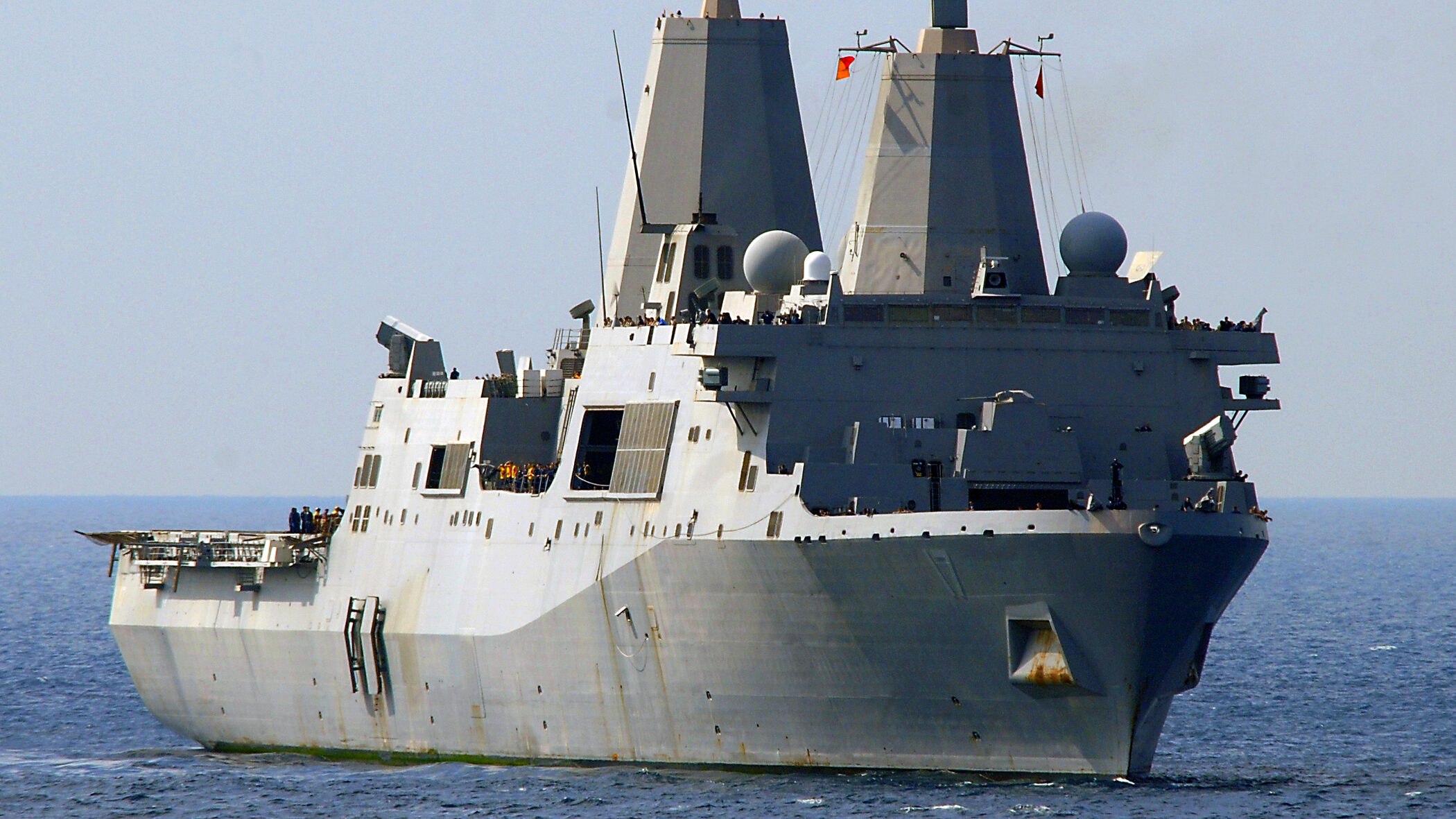
The amphibious transport dock ship USS San Antonio transits through the Gulf of Oman. (Photo courtesy of US Navy)
WASHINGTON — Following a contentious budget cycle, House lawmakers have taken the first step in boosting the Marine Corps’ fiscal 2024 budget by adding funding for its highly anticipated amphibious warship, a significant win for service brass following an unusually public battle with other parts of the Pentagon’s leadership.
In addition to funding the amphibious transport dock, which had not been included in the Pentagon’s FY24 request, lawmakers included provisions to prevent the Navy from retiring three amphibious vessels and two cruisers, which had been proposed in the president’s budget request.
The House Armed Services seapower and projection forces subcommittee on Monday released a draft of its part of the Fiscal Year 2024 National Defense Authorization Act, which includes a list of recommended vessels for the Navy’s shipbuilding account. The House Armed Services Committee is scheduled to begin marking up each of the subcommittee bills as well as “the chairman’s mark” this week, the first steps in the legislative process that will lead to a vote on the House floor.
In addition to the amphib, the legislation would recommend buying two Virginia-class submarines, one Columbia-class ballistic missile submarine, two Arleigh Burke-class destroyers, two Constellation-class frigates and a fleet oiler.
Rep. Joe Courtney, D-Conn., the subcommittee’s ranking member, said in a statement today the bill would also authorize multiyear procurement authority for up to 13 Virginia-class submarines.
“By authorizing multiyear procurement authority for 13 Virginia-class submarines, the subcommittee’s bipartisan mark ensures the Navy has the authority to exceed the two-per-year build cadence for Virginia-class submarines — demonstrating Congress’ commitment to meeting the Navy’s fleet requirements while supporting the AUKUS agreement,” he said.
“Importantly, this provision sends a robust demand signal to the submarine industrial base which, in the last year, has been making great strides to recover a two-per-year build rate after the pandemic‘s disruption,” the statement continued.
RELATED: Short On Amphibs For Turkey And Sudan, The Marines Grapple With Crisis Response Ethos
Gen. David Berger put the $1.7 billion San Antonio-class amphibious warship, LPD-33, at the top of his unfunded priorities list this year and it has been a topic that lawmakers have questioned him about at every opportunity. Each time, Berger has had to walk a fine line as he advocates for a ship the Marine Corps deems as irreplaceable while sitting next to his boss, Navy Secretary Carlos Del Toro, who has spent those same hearings defending the administration’s decision to not include the ship in the budget request.
And in at least one instance, Berger and Chief of Naval Operations Adm. Michael Gilday took their arguments, for and against the ship, respectively, to the same public stage and both cited cost as the basis of their positions.
The House Armed Services Committee, also called the “House authorizers,” are only the first step in the legislative process before the Marine Corps can sign any checks for LPD-33. But their Senate counterparts, on a bipartisan basis, have also signaled they disagree with the “strategic pause” advocated by the Pentagon and will move to boost the Marines’ budget.
Separate from the Navy’s shipbuilding account, the subcommittee mark also supports the purchase of two used sealift vessels for recapitalization of the reserve sealift fleet as well as requiring the Pentagon to continue conducting market research for available useful vessels, according to a statement from the subcommittee.
The mark also directs detailed reports from the Navy and Marine Corps to lawmakers on the hypersonic weapon program Conventional Prompt Strike, the Marine Corps’ island-hopping Landing Ship Medium efforts and the sustainability of the AEGIS SPY-1 radar.








